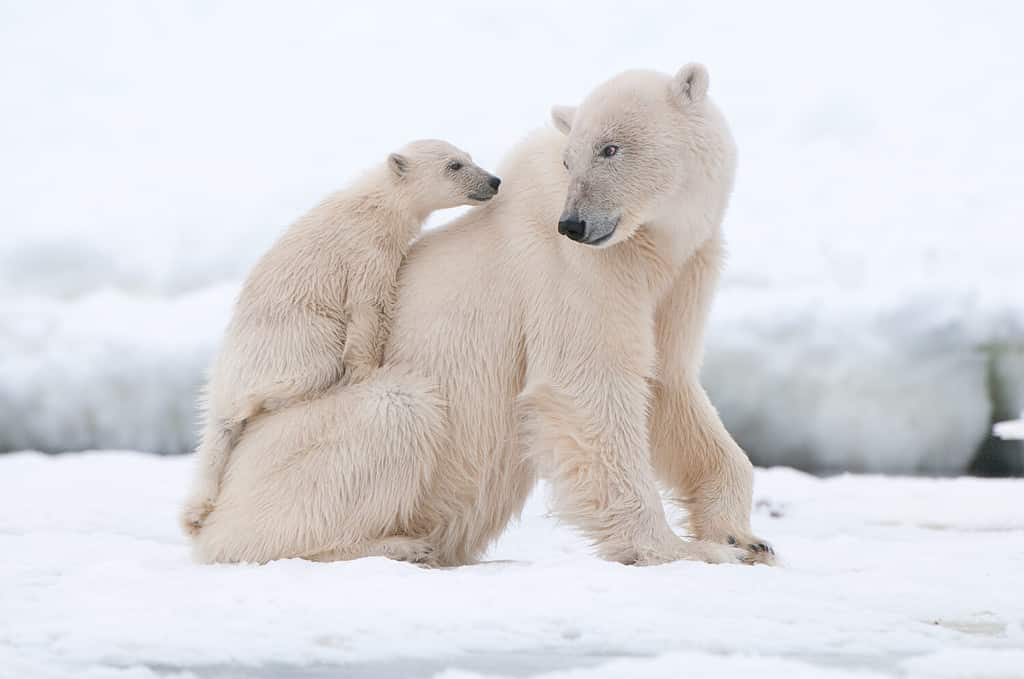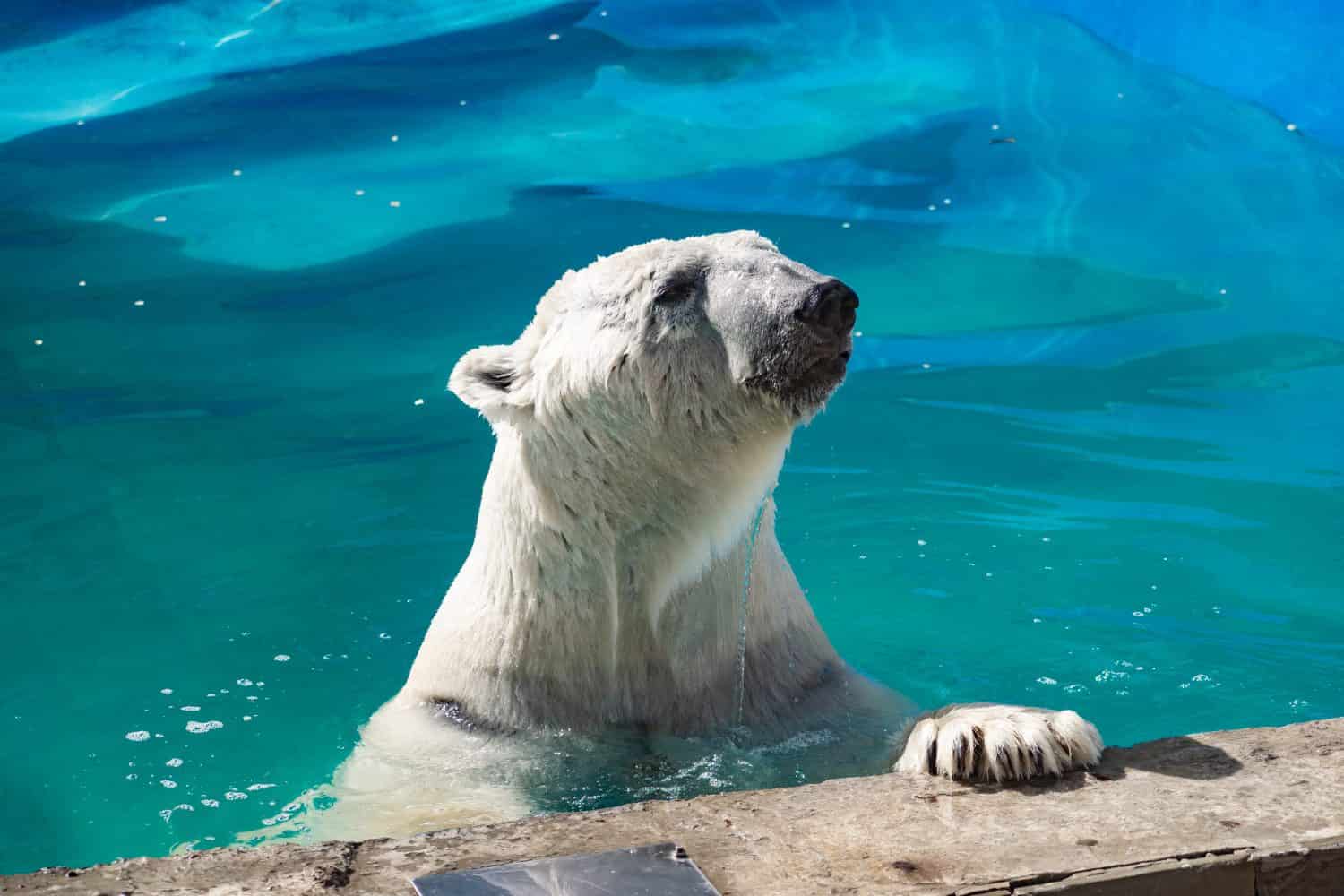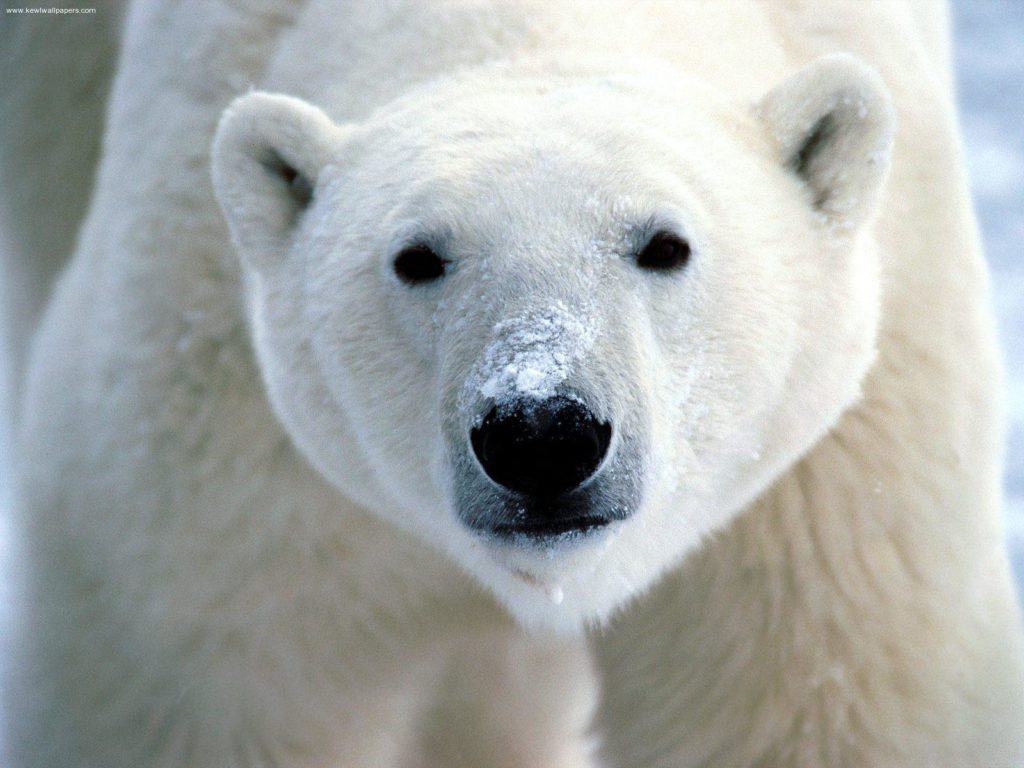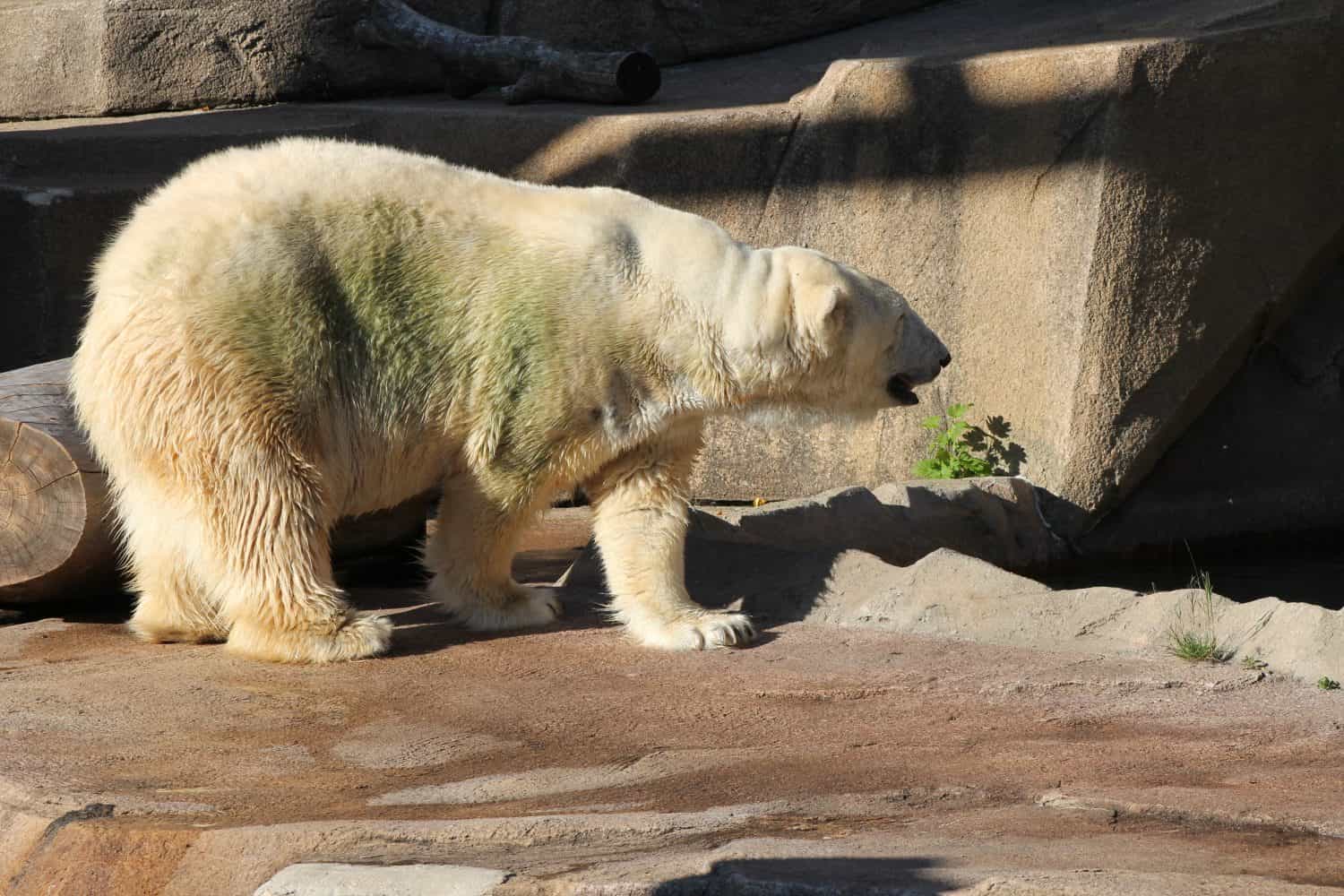Polar bears are known for their white fur, but did you know they also have black skin? They have these features for a couple of very good reasons. Polar bears have white fur and dark skin to soak up as much radiant heat from the sun as they can. The white fur also helps to camouflage the bears against the icy, snowy terrain. Let’s learn more about the fur and skin of amazing polar bears.
Polar Bear Fur Is Not Really White

Polar bears appear to have white fur, but each hair is actually transparent.
©Gecko1968/Shutterstock.com
You have probably spent most of your life thinking that polar bears have snow-white fur. And as far as our senses go, that would absolutely be true. The fur that covers a polar bear certainly looks white to the naked eye. However, the individual hairs that make up a polar bear’s white coat have no color at all. They are transparent and the longer guard hairs are even hollow. They look white because they reflect the light, much like the ice that makes up so much of their habitat. Some of that reflected light goes down, toward the polar bear’s skin, while some is reflected back out away from the bear.
A Polar Bear’s Dark Skin Helps It Stay Warm

When a polar bear gets wet, you can sometimes see its black skin through patches of fur.
©Anna-2118/Shutterstock.com
Polar bears have dark skin underneath their white fur. You can sometimes see some of their black skin through the fur on their muzzle, their ears, and of course on their feet. When polar bears swim, you can sometimes also catch a glimpse of black skin through the wet fur on their body.
If you’ve ever worn a black shirt on a summer day, you know that dark colors tend to absorb radiant heat from the sun more efficiently than light colors. A polar bear’s dark skin works the same way. Because they have black skin, they can absorb more heat than if they had pink or white skin, which would reflect more of the sun’s rays. A polar bear’s transparent fur also allows sunlight to pass through more easily to the skin than pigmented hairs would. This special fur also reflects a portion of the light down to the dark skin, providing even more warming rays.
Polar Bear Fur Provides Camouflage

Polar bears would not blend into their habitat without their snowy white coat.
An enormous black bear on the icy tundra would be difficult to miss. A bear like that would have difficulty sneaking up on any kind of prey. They could see it coming from far, far away. Black cubs on a snowy white background would be easy targets for predators, too. Fortunately for polar bears, with their dark skin, they have a coat that camouflages their color and helps them blend in.
As mentioned above, even though each hair in a polar bear’s coat is transparent, their fur has an overall white appearance. This white fur covers nearly every inch of a polar bear, and it hides its dark skin. This camouflage helps polar bears to hunt efficiently. It also helps mother polar bears keep their cubs safe from male polar bears and other potential predators.
Why Do Some Polar Bears Turn Green?

Sometimes polar bears turn green due to algae growing inside the hollow outer hairs on their coat.
©Gabrielle Hovey/Shutterstock.com
You may have seen polar bears in zoos or aquariums with a green tinge to their fur. They look grungy and dirty and not at all natural. But the reason they turn green actually is altogether natural. That green color comes from algae, which grows in the hollow guard hairs on the polar bear’s outer coat. Remember, these transparent hairs have no pigment of their own, and only look white because they reflect light. So, when they fill up with algae cells, they no longer look white but appear green instead. This condition normally occurs in warmer areas where algae thrive, and it can be largely prevented in captivity with adequate water filtration. Don’t worry, it does not harm the polar bear. And once the bear molts, it goes back to its original color.
When Do Polar Bears Molt?
Polar bears accumulate stains from the seals and other prey they hunt. Oils and blood can lodge in the hollow guard hairs on the outer surface of their coat. They turn the polar bear’s fur a dirty yellow color. No matter how hard they might try to wash themselves clean in the icy water of their environment, they may not be able to get rid of the brownish-yellow stains. Not to worry, though. Polar bears get a fresh new fur coat when they molt each year in the summer. Once the new fur grows in, their coat looks snowy and white again.
The photo featured at the top of this post is © Gecko1968/Shutterstock.com
Thank you for reading! Have some feedback for us? Contact the AZ Animals editorial team.







